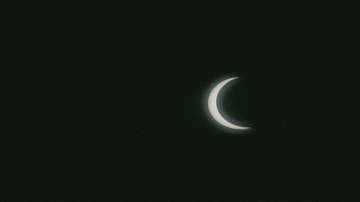Solar Eclipse 2020: The annular solar eclipse is one of the most exciting celestial phenomena which the world is watching today. It is the first Surya Grahan of 2020 which is pulling sky-watchers, observers from across the world. Though being an exciting astronomical event, people sometimes try to dare and take risks to watch the solar eclipse through naked eyes, x-ray sheets, or water reflection. However, no matter where you are, people must take safety precautions to watch the solar eclipse safely.
There is no part of an annular eclipse during which it is safe to look directly at the sun. People should use a proper solar filter or an indirect viewing method during all phases of the eclipse.
According to NASA, even if only a tiny silver of the Sun is visible around the moon's edge, that's still enough to cause damage to your eyes.
The solar eclipse started from around 9 am across the Indian map as the Sun, the Moon, and the Earth came in a straight line, and the country witnessed the 'deepest' annular solar eclipse in over a century. Astrologers said it a fourth super rare hybrid eclipse which is a mix between an annular and total solar eclipse.
Areas like Hyderabad, Chennai, Bhubaneshwar, Kolkata, Lucknow, Mumbai, Delhi, Patna, Shillong and more witnessed a partial phase of the annular solar eclipse from 9 am.
In the eclipse, the distance of the Moon and Earth will be larger than usual which means the moon will not be able to cover up the sun fully and will leave out the borders of the sun - giving an appearance of a "Ring of Fire".
PTI in a tweet informed that it is the last annular solar eclipse in India of this decade.
People can catch glimpse of the partially covered sun between 10 am and 2.28 pm as per the time differing as locations in India. The eclipse will continue for over three hours covering 84 per cent Sun. There are three types of solar eclipses - total, partial, and annular.
(With inputs from IANS)
ALSO READ | Solar Eclipse 2020: Surya Grahan timings in Delhi, Mumbai, Hyderabad, Bengaluru and other cities
ALSO READ | Solar Eclipse 2020: Live Updates
